SECURITY
SECURITY
Great project that will “shield” Greece – Detailed plan of the huge fence in Evros – Photos

Following the tragic events of last March, when Turkey attempted to transport thousands of illegal immigrants to Greece as part of a hybrid war, the Greek government decided to shield the river Evros by constructing entry barriers (fence).
According to the plan prepared by the Ministry of Citizen Protection, which was presented to Prime Minister, Kyriakos Mitsotakis, the project concerns:
- The construction of a 2,128.20m long barrier made of strong railing in the area of Mavragathos (Egnatia Observatory) near Monastiraki
- The construction of a 13,884.70m long barrier made of strong railing in the area of Poros – Tsirozi Estate (Petra – Rekalidi – Karagogou Observatories) near Fera
- The construction of a 8,833.40m long barrier made of strong railing around the area “Petalo” near the communities of Peplos and Vrysoula
- The construction of a 500m long barrier made of strong railing that will extend the existing barrier of Kastania – Nea Vyssa to the river Evros (Observatory Prasini Porta)
- The upgrading of an existing barrier (fence) in the area of Kastania – Nea Vyssa, approximately 10 km long, with the addition of strong railing
The works that will “shield” Evros will include:
- Maintenance works, upgrade and construction of new roads for monitoring the area as well as maintenance and reinforcment of existing barriers and trenches
- Construction of eight (8) new Elevated Anti-Ballistic Observatories along the technical barriers
- Improvement works in fifty seven (57) existing infrastructures (outposts, observatories, etc.) of the Hellenic Army, which include construction and electromechanical repairs / upgrades
The locations of the entry barriers have been determined by the Ministry of Foreign Affairs and were implemented by the Army Geographical Service. The Ministries of Foreign Affairs, National Defence and Civil Protection cooperated to determine the exact location of entry barriers.
Operational requirements, geomorphological, environmental and hydrological conditions (floods) were also taken into account for the completion of the project, while minor modifications may be made during construction.
The main criterion for entry barriers is to obstruct individuals or groups of people carrying light equipment from climbing or destructing the barrier. They need to be resistant to light vehicles and the partial suspension of heavier vehicles.
To deter excavations up to a depth of about 1m and to provide the possibility of visual communication in places.
In addition, they should have a free passage of water in case of floods and a minimum maintenance requirement. Finally, entry barriers should be a quick and economical construction.
The new barrier (fence) that will be constructed at a distance of 25,000 meters, will have two forms. As you can see in the photos, one of them is in areas of low zones, while the other in areas of the trench.

Above: Low zone areas Below: Areas with trenches
The pictures below show the areas where the new barrier will be constructed:
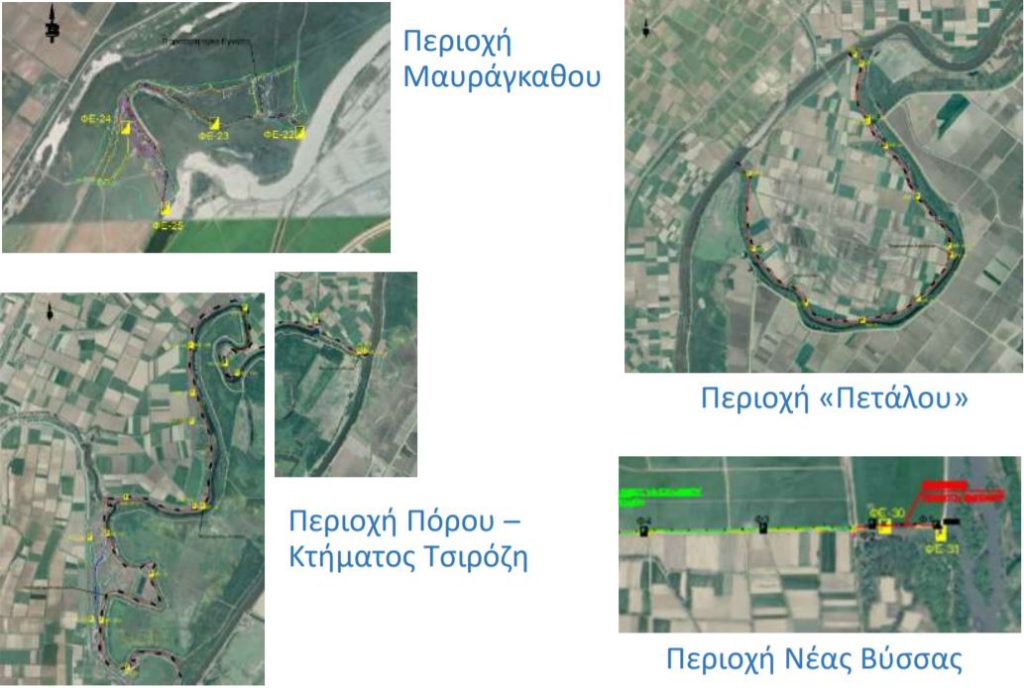
New barrier areas
The image below shows the form of the new barrier:
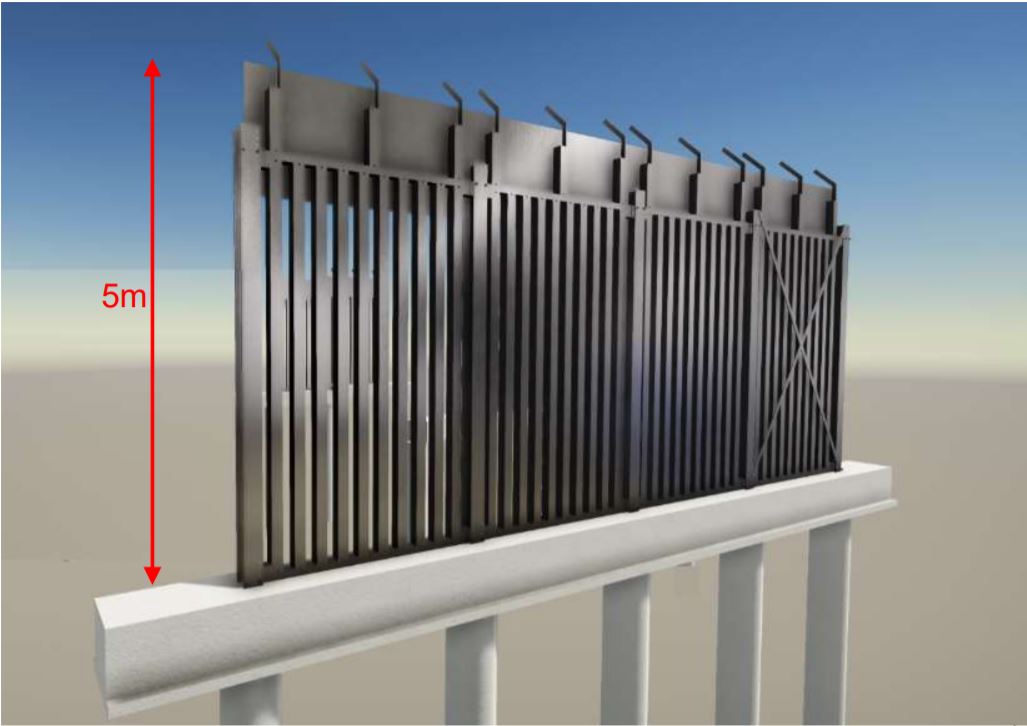
Form of the new barrier
Form of the new fence

View from Greece
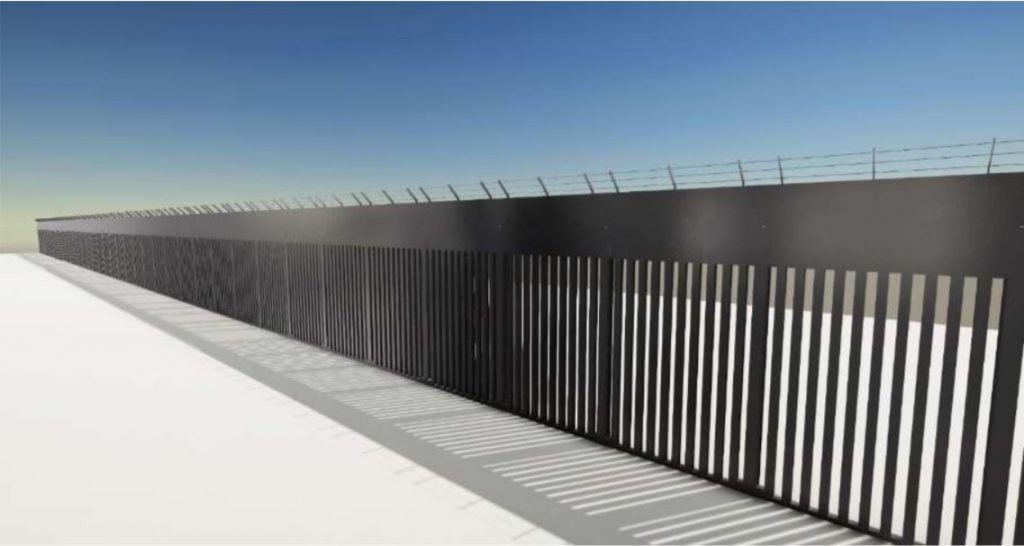
View from Turkey
In addition, the existing entry barrier, which extends from Kastanies to Nea Vyssa, at a length of 10,000 meters, is expected to be strengthened and raised drastically.
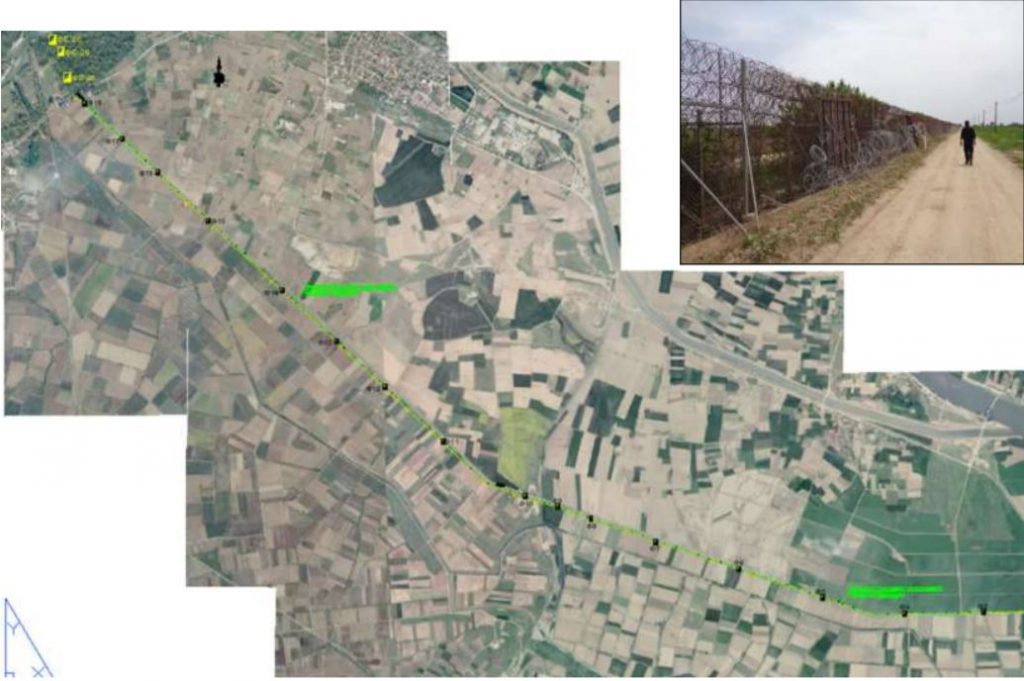
Existing obstacle of 10,000 meters
The following photo shows the existing fence after reinforcement and lifting works.

Reinforced existing fence with a view from Greece
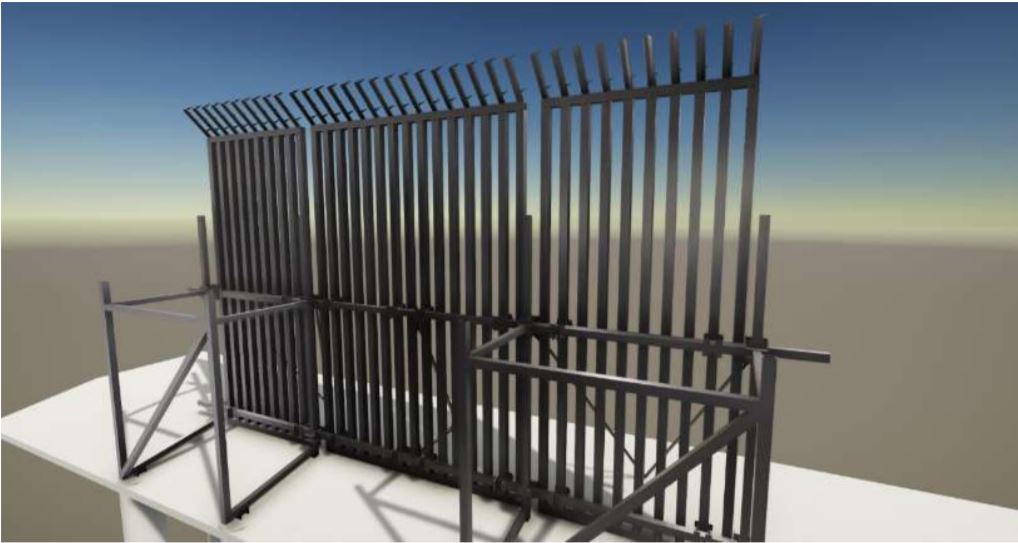
Reinforced existing fence with a view from Turkey
A new observatory type will also be built, enclosed with a watchtower featuring anti-ballistic specifications.
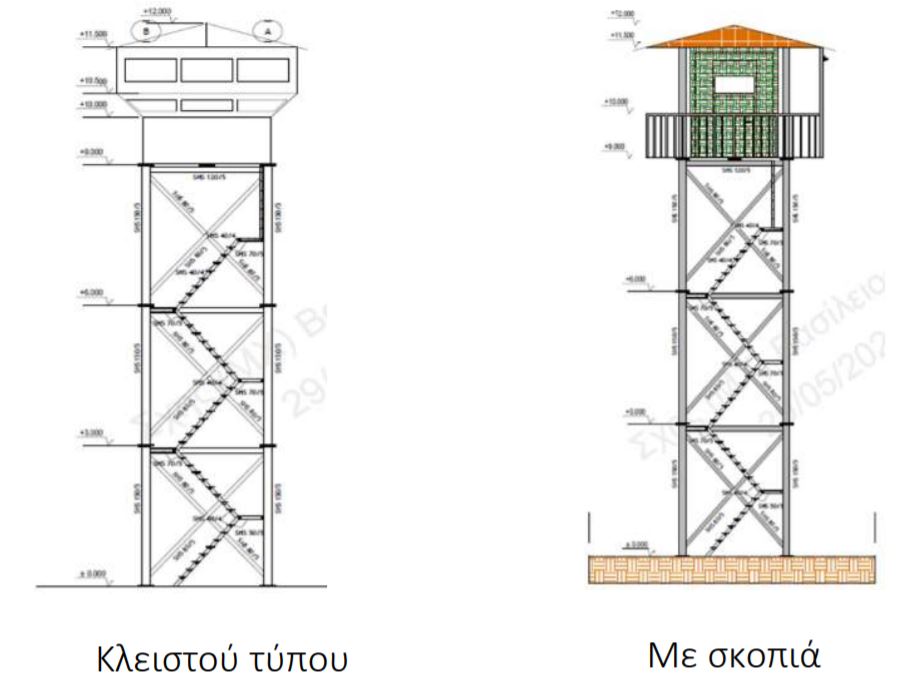
Left: Closed type anti-ballistic observatory Right: Anti-ballistic observatory with a standpoint
Regarding the procedures of the new shielding project of the Evros river, in June 2020 the drafting of the technical studies and the tender documents were completed. Furthermore, within July 2020 the tender and negotiation procedures were completed, as defined in articles 32 par. 2c and 32A of Law 4412/2016.
Also read: Support to the Greek Army and Security Forces | The donations of the last few months
For reasons of transparency and so as to ensure the construction of this great project, all major contractors (7th class) were invited to participate in the negotiation process. In the negotiation process (study budget of € 70,000,000 with VAT), 4 of the 5 invited came with a joint offer. The negotiation with this joint venture eventually led to a 10.03% discount, so the final cost of the project will be € 62,980,941 including VAT.
The overall process of planning, designing and assigning the project took less than three months, which is unprecedented in the process of completing public tenders. The project will be carried out by AVAX S.A. – INTRAKAT S.A – MYTILINEOS S.A. – ΤΕRΝΑ S.A.

The deadline for the completion of the project is April 30, 2021. Specifically, for the repair of the existing fence, a deadline of 5 months is given, whereas for the construction of parts of the new barrier, there is a deadline of 6 months.
The soil has already been cleaned and landscaped, the foundations for the trench and the technical barriers in the areas of N. Vyssa, Poros and Ktima Tsirozi have been placed, while works continue in the areas of Mavragathos and Petalos.
Also read: Evros: Greek forces unharmed – Strengthening with “DAVID”
All necessary procedures for the construction of the trench in the areas of Nea Vyssa Kastania and Poros – Ktima Tsirozi Feron are also being implemented. At the same time, the foundations of the Technical Obstacles are currently underway.
The main material of the technical obstacles is the prefabricated galvanized metal constructions (16,000 sq.m.) which correspond to 65% of the total cost. The Consortium has assigned the industrialization of metal structures to four of the largest Greek factories. Industrialization is in progress and the first samples have already been tested.
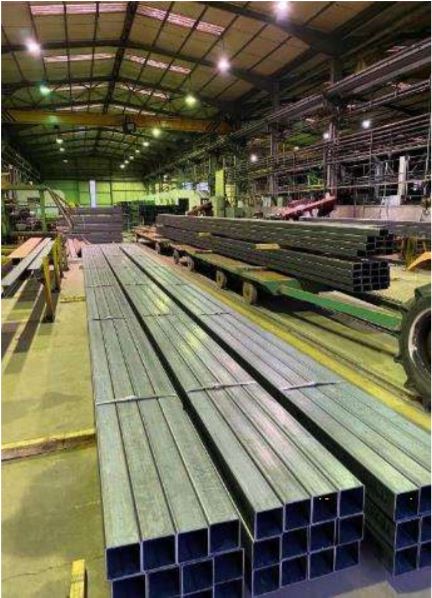
Metalwork
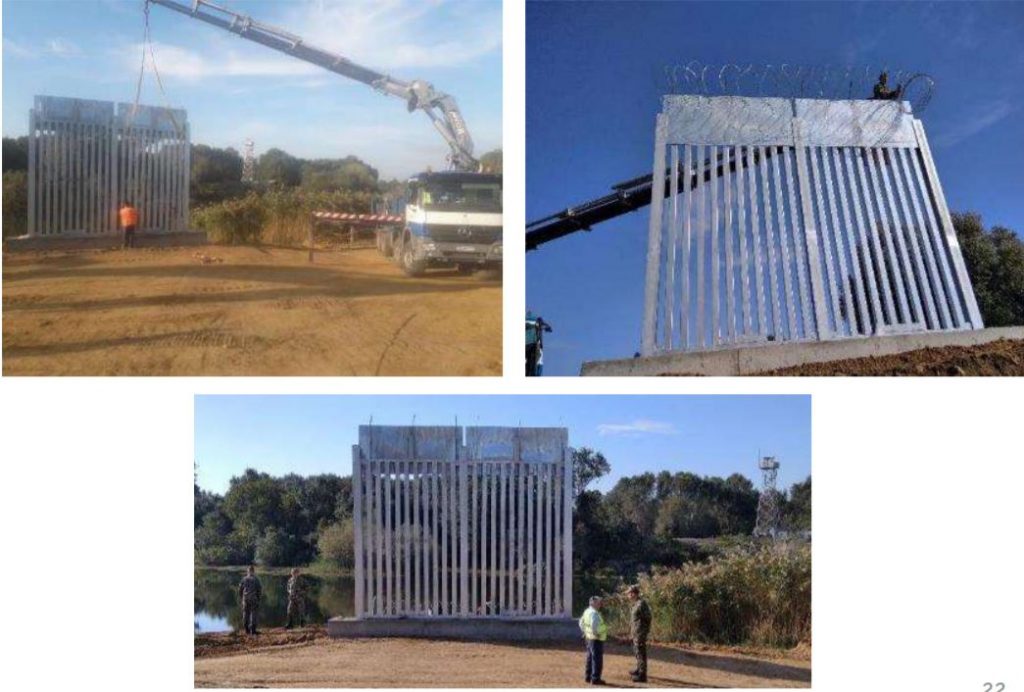
Test sections
Finally, the work is being carried out and will be carried out normally in strict accordance with the schedule, so that this important work will be completed soon in order to shield the Greek borders and prevent attacks similar to the ones taken place last March.
Also read: The chronicle of the “hybrid” war in Evros and the Aegean islands
NEWSLETTER SUBSCRIPTION
Cyprus | Jordan mission to reinforce aerial firefighting means
Two firefighting helicopters with their 18-member crew arrived in Cyprus from Jordan to support the Republic of Cyprus’ aerial firefighting.
Limassol | Firecrackers and fireworks spread chaos – Photos
The night of Holy Saturday in Limassol was eventful, as the Police and Fire Service faced a massive attack by a group of youths.
Georgia | Another session in two weeks on the controversial “foreign influence” bill
Thousands of protesters blocked a central intersection in the Georgian capital, Tbilisi, where protests against the controversial…
STORE project | AI-assisted optronics to increase combat perception capabilities
The European Commission signed the Grant Agreement for the launch of the STORE (Shared daTabase for Optronics image Recognition and…
The FEDERATES project | Developing Europe’s first MSaas ecosystem
On 21 March 2024, the first Italian Workshop on the FEDERATES project of the European Defence Fund was held.
Cyprus | Jordan mission to reinforce aerial firefighting means
Two firefighting helicopters with their 18-member crew arrived in Cyprus from Jordan to support the Republic of Cyprus’ aerial firefighting.
Saint George | The Patron Saint of the Army and the Infantry
Saint George is one of the most prominent Saints of the Christian religion, not only of the Eastern Orthodox Church, but also of all…
QinetiQ | UK’s first Manned – Unmanned aircraft Teaming
QinetiQ has successfully trialled the UK’s first Manned-Unmanned Teaming (MUM-T) demonstration between a crewed aircraft and a drone.
Lambda Automata | Investment in UAV technology
Greek Lambda Automata has recently announced a major development that will strengthen its position in the defence industry.














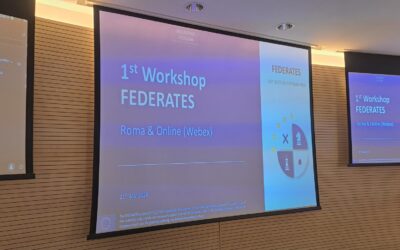
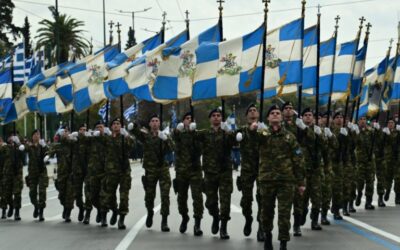

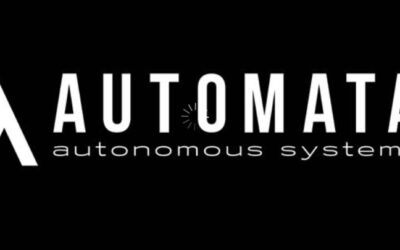
0 Comments